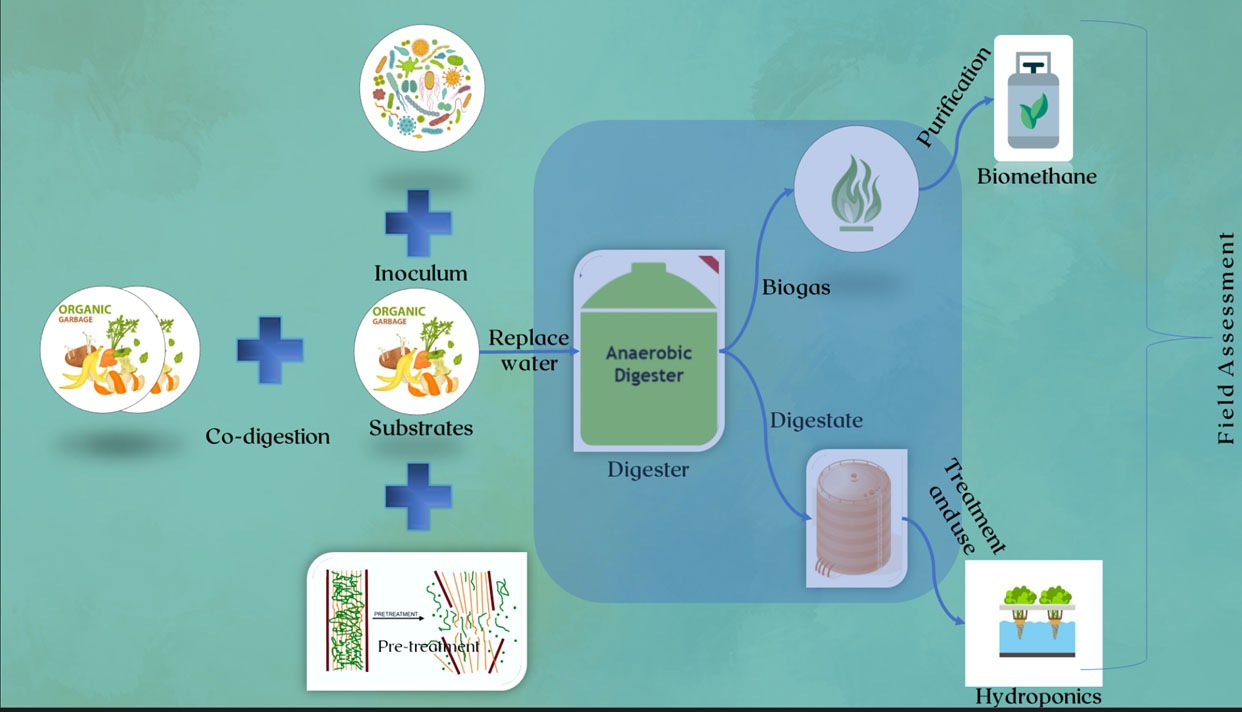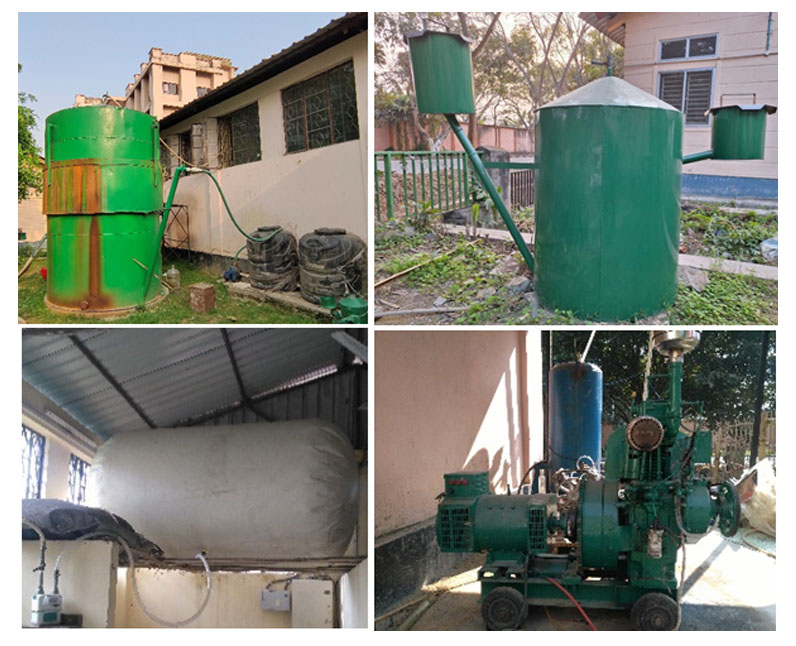Anaerobic Digestion Group

The Anaerobic Digestion team is attempting to address the problem of organic waste by degrading it in the absence of oxygen. The technique of anaerobic digestion produces two usable products, Biogas and Digestate. The team has tried to address the problems created by various wastes, including the organic fraction of municipal solid waste (kitchen waste and vegetable waste), Weeds (Ageratum conyzoides, Lantana camara, Parthenium hysterophorus, Eichhornia crassipes, and Hydrilla verticillata), Agricultural residue (rice straw, Sugarcane Bagasse) and industrial wastes (pulp and papermill waste, petroleum sludge). These organic wastes are problematic to the environment if left untreated and challenging to work with. The microbes required for the anaerobic digestion can be derived from various sources and each of these could yield varying degrees of degradation and biogas production. Diverse animal excreta such as cow dung, goat dung, rhinoceros’ dung, and piggery waste have been researched as a source of microbes.
Some of the organic waste is difficult to treat anaerobically and yields lower degradation and biogas due to its complex nature or lack of one or the other necessary nutrient. In such cases, the organic waste is made to undergo various pre-treatment and co-digestion strategies to improve the digestion of these organic wastes. Using pre-treatment techniques such as heating, application of electrical force, and addition of certain chemicals or specific bacteria, the team was able to substantially improve the biogas yield of difficult substrates such as Rice straw, Ageratum conyzoides, Lantana camara, Parthenium hysterophorus, Wheat Straw and Sugarcane Bagasse.
In recent years, the team has begun to concentrate on utilizing by-products like biogas and digestate. The purification of biogas to increase methane content and the use of digestate in agricultural production are also being investigated. The potential for anaerobic digestion in the field is being examined, as well as the challenges that come with large-scale deployment.
Reactors

The design and configuration of digestors greatly influence the overall digestion of the organic waste and as such the team has been developing and improving several digesters ranging in size from 20 liters to 10,000 litres to increase anaerobic digestion and shorten the digestion period. These include an Anaerobic Auger Plug Flow Reactor (AAPFR), a Single Phase Continuous Anaerobic Reactor (SPCAR), a Bi-phased continuous anaerobic reactor with stirrer (BCARS), and an Anaerobic Bi-phased Baffled Reactor (ABBR). Of these reactors, ABBR has shown great potential in degrading the organic matter in a lower amount of time and producing a considerable amount of biogas.
Currently, two ABBR reactors of 0.7 m3 and 10 m3 are being studied in the lab. Up to 300 kilograms of waste can be fed into the 10 m3 reactor daily, producing 4.5 m3of biogas daily. This biogas is then purified and used to generate electricity to run the electrical fixtures of the lab.
